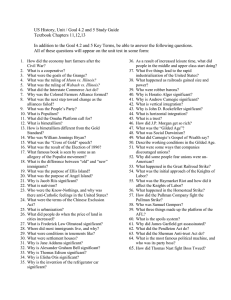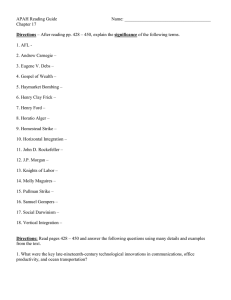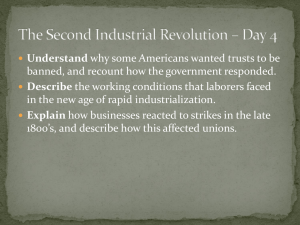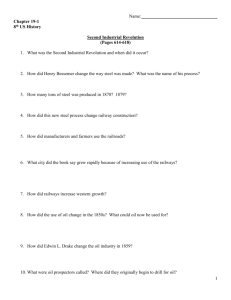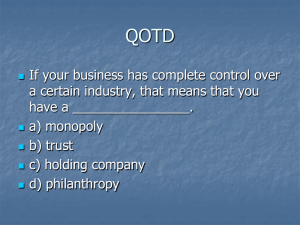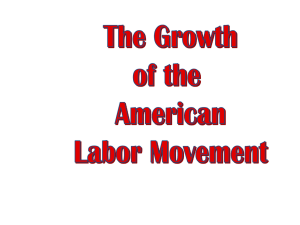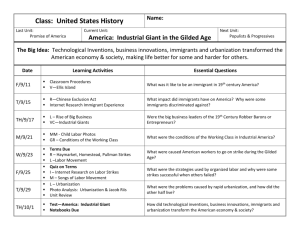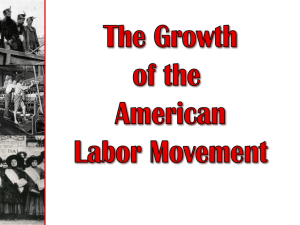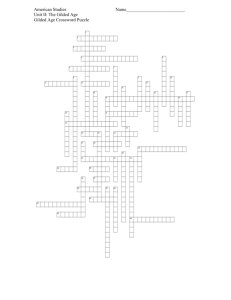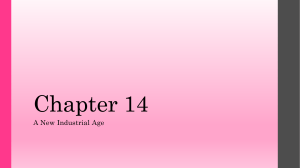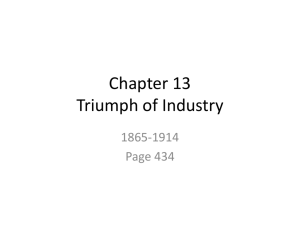6.3 Labor Strives to Organize
advertisement
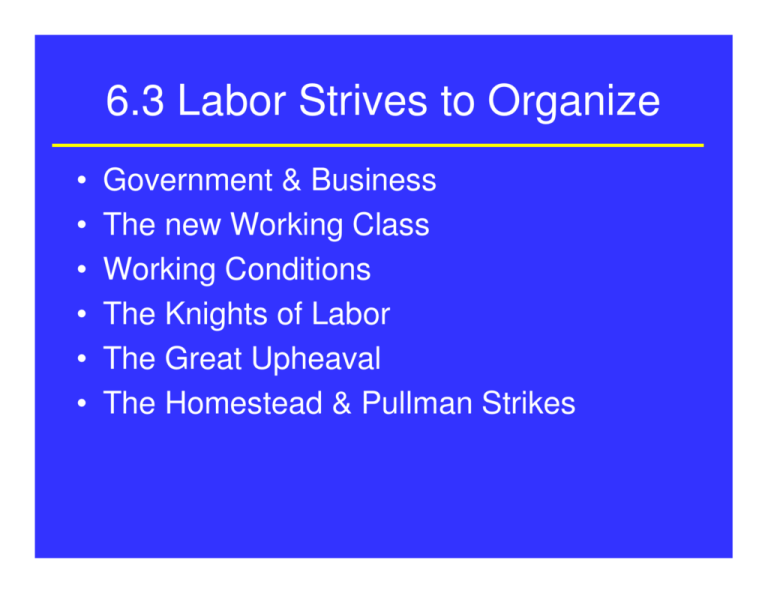
6.3 Labor Strives to Organize • • • • • • Government & Business The new Working Class Working Conditions The Knights of Labor The Great Upheaval The Homestead & Pullman Strikes Government & Business • Gov’t placed high tariffs on imports helped American businesses. • 1890 Sherman Antitrust Act – Outlawed all monopolies and trusts. New Working Class • Demand for labor increased during Industrial Revolution. • Immigrants • African Americans moved from the South to the North for jobs – The Great Migration • Women and Children • 1900, women accounted for 18% of workforce • 1890 20% of children ages 10-15 worked. Working Conditions • • • • Terrible conditions 12 hour shifts for children Low wages African American & immigrants worked for lower wages • Women & children half pay • Long hours fatigue unsafe working conditions – 1881 30,000 Railroad workers killed/injured. Knights of Labor • (1869) union skilled & unskilled workers • 8 hour workday • Regulation of child labor • Equal pay for women The Great Upheaval • 1886 year of intense strikes & violent labor confrontations • WV RR Strike (1877) • Haymarket Riot (Chicago) – Police killed a striker – Demonstrators met to protest and someone threw a bomb that killed 7 police officers • American Federation of Labor – Union for skilled workers Homestead & Pullman Strikes • Carnegie Steel & Pullman Sleeping Car factory – Wage cuts – Carnegie locked out workers – Railroads shut down – President Grover Cleveland steps in to end strike US Mail.
